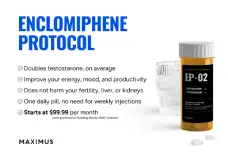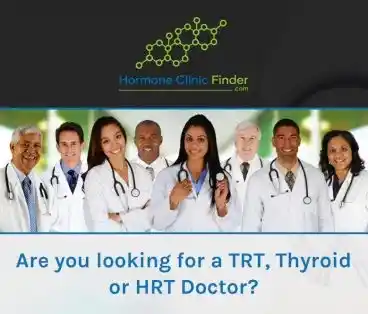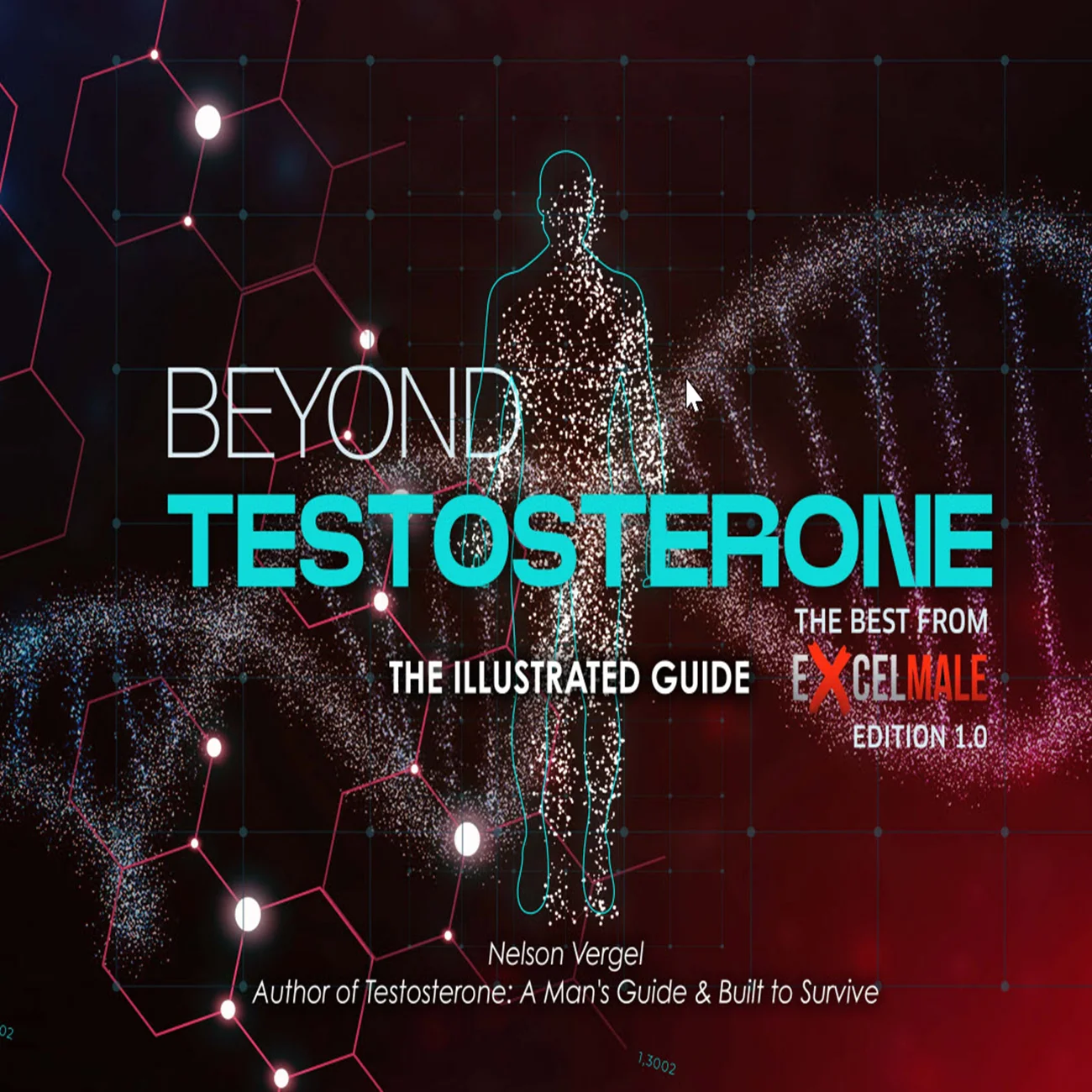madman
Super Moderator
* Interpretation of the TRAVERSE findings is limited by several factors. Over 60 % of participants discontinued treatment prior to trial completion, resulting in a median exposure of less than 22 months. Additionally, outcome data were only available for approximately 80 % of the potential follow-up period. The trial's exclusive use of transdermal testosterone also limits generalisability to other formulations, particularly intramuscular injections, which may have differing cardiovascular profiles. These caveats necessitate cautious interpretation, though TRAVERSE remains the most definitive trial to date assessing cardiovascular safety in this population.
* Taken together, the current evidence suggests that while low endogenous testosterone is associated with adverse cardio metabolic profiles and increased all-cause mortality, its direct role in cardiovascular disease remains uncertain. Exogenous testosterone therapy, particularly when administered transdermally in men with established or elevated cardiovascular risk, does not appear to increase the risk of major adverse cardiovascular events in the short to medium term. However, observed increases in non-atherothrombotic events such as arrhythmias and thromboembolism underscore the need for careful patient selection, ongoing surveillance, and further investigation into formulation-specific effects and long-term outcomes.
Fig. 1. Pathogenesis of early vascular ageing and cardiovascular disease. Stepwise progression from early structural and mechanical changes to the development of arteriosclerosis and atherosclerosis, resulting in gradual increases in arterial stiffness, reductions in endothelial function and overall increased risk of cardiovascular morbidity and mortality. These changes are reversible, and the development of cardiovascular disease can be preventable with the introduction of appropriate lifestyle
modifications, such as increasing physical activity. Abbreviations: HFrEF: heart failure with reduced ejection fraction; VSMC: vascular smooth muscle cell.

Testosterone is an important vascular hormone, with multiple effects reported on the vasculature. As such, boys and men with early onset hypogonadism may have altered cardiovascular function, with the potential to result in adverse cardiometabolic outcomes in adulthood. Given the fact that cardiovascular changes in the young can affect future cardiovascular health, there is a need to better understand the influence of androgens on the vasculature in those with conditions such as 46, XY Disorders of Sex Development and Klinefelter Syndrome. This review summarises what is known about hypogonadism and the effects of testosterone supplementation in adults with hypogonadism, as well as what is currently understood in those with early onset hypogonadism specifically. A number of research gaps persist in this area and there is a need for international collaborative studies to address these for future generations of affected individuals.
Introduction
Over the last 25 years, studies investigating sex differences in the prevalence and outcomes of cardiovascular diseases (CVDs) have increased dramatically, with clear evidence that the pathophysiology of CVD is influenced by both sex and gender [1,2]. Indeed, CVD presents differently in men and women, with men more likely to develop macrovascular coronary disease whereas women are morelikely to develop microvascular and specifically cerebrovascular disease as well as heart failure with preserved ejection fraction [3]. Its eems therefore, that cardiovascular (CV) function, including blood pressure (BP) development and regulation, is influenced by the biological effects of the sex chromosomes and sex hormones.
Testosterone and its more potent metabolite 5α-dihydrotestosterone (DHT) are the principal steroidal androgens and whilst their presence is critical for typical male sex development; their deficiency is important for typical female sex development. Androgens also exert significant influence on the vasculature via modulation of vascular function and atherosclerotic plaque formation through both genomic and non-genomic mechanisms [4]. Androgens can act through multiple signalling pathways within the same cells and their effects can be both vasoprotective and vasoinjurious, depending on factors including the heterogeneity of the vascular endothelium,differential expression of androgen and sex hormone receptors in endothelial and vascular smooth muscle cells (VSMCs), and the extent of androgen exposure [4]. Research indicates that both deficient and excessive levels of testosterone are associated with anincreased risk of CVD [5], although to date, there is no clear evidence that timing of puberty affects long-term cardiovascularparameters [6]. Previously, the focus of CV research has been on the impact of hypogonadism on adult and elderly men. However, given our increasing understanding that premature evidence of vascular ageing can result in adverse cardiometabolic outcomes in adulthood, there is a need to consider the effects of hypogonadism in the young. As such, this review will focus on the effects of hypogonadism in males with congenital or genetic causes of early onset hypogonadism.
* The burden of cardiovascular disease and early vascular aging (EVA)
* Role of androgens on the vasculature
* Effects of hypogonadism on the vasculature in adults and effects of testosterone replacement therapy
Our understanding of the cardiovascular effects of exogenous testosterone has been substantially improved through recent large scale trials. The TestES meta-analysis of 35 randomised controlled trials (n = 5601, mean age 65 years), including individual participant data from 17 trials (n = 3431), reported no significant difference in cardiovascular event rates between testosterone and placebo groups (7.5 % vs. 7.2 %; OR 1.07, 95 % CI 0.81–1.42), with similarly low and non-significant differences in mortality (0.4 %vs. 0.8 %; OR 0.46, 95 % CI 0.17–1.24) [59].
Nonetheless, interpretation of these findings is constrained by methodological limitations. The median follow-up duration was short (9.5 months), limiting inferences regarding long-term safety. Furthermore, nearly 50 % of included trials did not provide individual participant data, thereby reducing the statistical power for subgroup analyses. Persistent heterogeneity in study design, baseline cardiovascular risk, testosterone formulation, and treatment duration further complicates interpretation, despite efforts to account for these factors in sensitivity analyses.
The TRAVERSE trial represents the most rigorous assessment to date of testosterone’s cardiovascular safety in a high-risk population. This large, randomised, placebo-controlled trial enrolled 5246 men aged 45–80 years with hypogonadism and either established cardiovascular disease or elevated cardiovascular risk [60]. Over a mean follow-up of 33 months, transdermal testosteronewas non inferior to placebo for the primary composite outcome of major adverse cardiovascular events (MACE) (7.0 % vs. 7.3 %, HR0.96, 95 % CI 0.78–1.17), with consistent findings across sensitivity and subgroup analyses.
Although the results provide reassurance regarding atherothrombotic risk, certain adverse events were more frequent in the testosterone group, including atrial fibrillation (3.5 % vs. 2.4 %), arrhythmias requiring intervention (5.2 % vs. 3.3 %), and pulmonary embolism (0.9 % vs. 0.5 %) [60]. While not primary endpoints, these findings highlight the importance of monitoring for non-atherosclerotic cardiovascular complications in men receiving testosterone therapy.
Interpretation of the TRAVERSE findings is limited by several factors. Over 60 % of participants discontinued treatment prior totrial completion, resulting in a median exposure of less than 22 months. Additionally, outcome data were only available for approximately 80 % of the potential follow-up period. The trial's exclusive use of transdermal testosterone also limits generalisability toother formulations, particularly intramuscular injections, which may have differing cardiovascular profiles. These caveats necessitate cautious interpretation, though TRAVERSE remains the most definitive trial to date assessing cardiovascular safety in this population.
Taken together, the current evidence suggests that while low endogenous testosterone is associated with adverse cardio metabolic profiles and increased all-cause mortality, its direct role in cardiovascular disease remains uncertain. Exogenous testosterone therapy, particularly when administered transdermally in men with established or elevated cardiovascular risk, does not appear to increase the risk of major adverse cardiovascular events in the short to medium term. However, observed increases in non-atherothrombotic events such as arrhythmias and thromboembolism underscore the need for careful patient selection, ongoing surveillance, and further investigation into formulation-specific effects and long-term outcomes.
* Early onset hypogonadism
- Hypospadias
- Congenital hypogonadotrophic hypogonadism (CHH)
- Klinefelter Syndrome (KS)
- Prader Willi Syndrome
Summary
Testosterone is an important vasoactive hormone and has a number of actions within the vasculature. Adult hypogonadism is associated with significant increases in CV morbidity and mortality, and testosterone supplementation may improve these. Adverse CV function can present early in life resulting in poor CV outcomes in adulthood if preventative measures are not implemented and risk stratification undertaken. Many studies have demonstrated associations between early onset hypogonadism and altered CV function including in individuals with hypospadias, congenital hypogonadotrophic hypogonadism and Klinefelter Syndrome, consistent with our understanding that cardiovascular status is influenced by exposure to sex steroids as well as sex chromosomes. What remains unclear is why CV dysfunction develops in children with early onset hypogonadism and whether a lack of androgen exposureis solely responsible. In addition, there is no current consensus on a need to monitor CV status in young people born with conditions associated with early onset hypogonadism or how best to manage CV dysfunction once identified. Of course, individuals may also develop hypogonadism during early childhood secondary to tumours, late effects of oncology treatment, trauma or other chronic conditions, and although these are out with the scope of the current review, it is likely these will also lead to consequences on the vasculature and as such the need for screening and monitoring of CV function in these conditions should also be considered. Overall,there is a need for research to be undertaken to investigate these issues in all those at risk of early onset hypogonadism, ideally with international collaboration particularly given the low prevalence of some of the congenital and genetic causes. Through early identification and management, it is hoped that the CV burden of disease can therefore be reduced for affected individuals.
* Taken together, the current evidence suggests that while low endogenous testosterone is associated with adverse cardio metabolic profiles and increased all-cause mortality, its direct role in cardiovascular disease remains uncertain. Exogenous testosterone therapy, particularly when administered transdermally in men with established or elevated cardiovascular risk, does not appear to increase the risk of major adverse cardiovascular events in the short to medium term. However, observed increases in non-atherothrombotic events such as arrhythmias and thromboembolism underscore the need for careful patient selection, ongoing surveillance, and further investigation into formulation-specific effects and long-term outcomes.
Fig. 1. Pathogenesis of early vascular ageing and cardiovascular disease. Stepwise progression from early structural and mechanical changes to the development of arteriosclerosis and atherosclerosis, resulting in gradual increases in arterial stiffness, reductions in endothelial function and overall increased risk of cardiovascular morbidity and mortality. These changes are reversible, and the development of cardiovascular disease can be preventable with the introduction of appropriate lifestyle
modifications, such as increasing physical activity. Abbreviations: HFrEF: heart failure with reduced ejection fraction; VSMC: vascular smooth muscle cell.
Testosterone is an important vascular hormone, with multiple effects reported on the vasculature. As such, boys and men with early onset hypogonadism may have altered cardiovascular function, with the potential to result in adverse cardiometabolic outcomes in adulthood. Given the fact that cardiovascular changes in the young can affect future cardiovascular health, there is a need to better understand the influence of androgens on the vasculature in those with conditions such as 46, XY Disorders of Sex Development and Klinefelter Syndrome. This review summarises what is known about hypogonadism and the effects of testosterone supplementation in adults with hypogonadism, as well as what is currently understood in those with early onset hypogonadism specifically. A number of research gaps persist in this area and there is a need for international collaborative studies to address these for future generations of affected individuals.
Introduction
Over the last 25 years, studies investigating sex differences in the prevalence and outcomes of cardiovascular diseases (CVDs) have increased dramatically, with clear evidence that the pathophysiology of CVD is influenced by both sex and gender [1,2]. Indeed, CVD presents differently in men and women, with men more likely to develop macrovascular coronary disease whereas women are morelikely to develop microvascular and specifically cerebrovascular disease as well as heart failure with preserved ejection fraction [3]. Its eems therefore, that cardiovascular (CV) function, including blood pressure (BP) development and regulation, is influenced by the biological effects of the sex chromosomes and sex hormones.
Testosterone and its more potent metabolite 5α-dihydrotestosterone (DHT) are the principal steroidal androgens and whilst their presence is critical for typical male sex development; their deficiency is important for typical female sex development. Androgens also exert significant influence on the vasculature via modulation of vascular function and atherosclerotic plaque formation through both genomic and non-genomic mechanisms [4]. Androgens can act through multiple signalling pathways within the same cells and their effects can be both vasoprotective and vasoinjurious, depending on factors including the heterogeneity of the vascular endothelium,differential expression of androgen and sex hormone receptors in endothelial and vascular smooth muscle cells (VSMCs), and the extent of androgen exposure [4]. Research indicates that both deficient and excessive levels of testosterone are associated with anincreased risk of CVD [5], although to date, there is no clear evidence that timing of puberty affects long-term cardiovascularparameters [6]. Previously, the focus of CV research has been on the impact of hypogonadism on adult and elderly men. However, given our increasing understanding that premature evidence of vascular ageing can result in adverse cardiometabolic outcomes in adulthood, there is a need to consider the effects of hypogonadism in the young. As such, this review will focus on the effects of hypogonadism in males with congenital or genetic causes of early onset hypogonadism.
* The burden of cardiovascular disease and early vascular aging (EVA)
* Role of androgens on the vasculature
* Effects of hypogonadism on the vasculature in adults and effects of testosterone replacement therapy
Our understanding of the cardiovascular effects of exogenous testosterone has been substantially improved through recent large scale trials. The TestES meta-analysis of 35 randomised controlled trials (n = 5601, mean age 65 years), including individual participant data from 17 trials (n = 3431), reported no significant difference in cardiovascular event rates between testosterone and placebo groups (7.5 % vs. 7.2 %; OR 1.07, 95 % CI 0.81–1.42), with similarly low and non-significant differences in mortality (0.4 %vs. 0.8 %; OR 0.46, 95 % CI 0.17–1.24) [59].
Nonetheless, interpretation of these findings is constrained by methodological limitations. The median follow-up duration was short (9.5 months), limiting inferences regarding long-term safety. Furthermore, nearly 50 % of included trials did not provide individual participant data, thereby reducing the statistical power for subgroup analyses. Persistent heterogeneity in study design, baseline cardiovascular risk, testosterone formulation, and treatment duration further complicates interpretation, despite efforts to account for these factors in sensitivity analyses.
The TRAVERSE trial represents the most rigorous assessment to date of testosterone’s cardiovascular safety in a high-risk population. This large, randomised, placebo-controlled trial enrolled 5246 men aged 45–80 years with hypogonadism and either established cardiovascular disease or elevated cardiovascular risk [60]. Over a mean follow-up of 33 months, transdermal testosteronewas non inferior to placebo for the primary composite outcome of major adverse cardiovascular events (MACE) (7.0 % vs. 7.3 %, HR0.96, 95 % CI 0.78–1.17), with consistent findings across sensitivity and subgroup analyses.
Although the results provide reassurance regarding atherothrombotic risk, certain adverse events were more frequent in the testosterone group, including atrial fibrillation (3.5 % vs. 2.4 %), arrhythmias requiring intervention (5.2 % vs. 3.3 %), and pulmonary embolism (0.9 % vs. 0.5 %) [60]. While not primary endpoints, these findings highlight the importance of monitoring for non-atherosclerotic cardiovascular complications in men receiving testosterone therapy.
Interpretation of the TRAVERSE findings is limited by several factors. Over 60 % of participants discontinued treatment prior totrial completion, resulting in a median exposure of less than 22 months. Additionally, outcome data were only available for approximately 80 % of the potential follow-up period. The trial's exclusive use of transdermal testosterone also limits generalisability toother formulations, particularly intramuscular injections, which may have differing cardiovascular profiles. These caveats necessitate cautious interpretation, though TRAVERSE remains the most definitive trial to date assessing cardiovascular safety in this population.
Taken together, the current evidence suggests that while low endogenous testosterone is associated with adverse cardio metabolic profiles and increased all-cause mortality, its direct role in cardiovascular disease remains uncertain. Exogenous testosterone therapy, particularly when administered transdermally in men with established or elevated cardiovascular risk, does not appear to increase the risk of major adverse cardiovascular events in the short to medium term. However, observed increases in non-atherothrombotic events such as arrhythmias and thromboembolism underscore the need for careful patient selection, ongoing surveillance, and further investigation into formulation-specific effects and long-term outcomes.
* Early onset hypogonadism
- Hypospadias
- Congenital hypogonadotrophic hypogonadism (CHH)
- Klinefelter Syndrome (KS)
- Prader Willi Syndrome
Summary
Testosterone is an important vasoactive hormone and has a number of actions within the vasculature. Adult hypogonadism is associated with significant increases in CV morbidity and mortality, and testosterone supplementation may improve these. Adverse CV function can present early in life resulting in poor CV outcomes in adulthood if preventative measures are not implemented and risk stratification undertaken. Many studies have demonstrated associations between early onset hypogonadism and altered CV function including in individuals with hypospadias, congenital hypogonadotrophic hypogonadism and Klinefelter Syndrome, consistent with our understanding that cardiovascular status is influenced by exposure to sex steroids as well as sex chromosomes. What remains unclear is why CV dysfunction develops in children with early onset hypogonadism and whether a lack of androgen exposureis solely responsible. In addition, there is no current consensus on a need to monitor CV status in young people born with conditions associated with early onset hypogonadism or how best to manage CV dysfunction once identified. Of course, individuals may also develop hypogonadism during early childhood secondary to tumours, late effects of oncology treatment, trauma or other chronic conditions, and although these are out with the scope of the current review, it is likely these will also lead to consequences on the vasculature and as such the need for screening and monitoring of CV function in these conditions should also be considered. Overall,there is a need for research to be undertaken to investigate these issues in all those at risk of early onset hypogonadism, ideally with international collaboration particularly given the low prevalence of some of the congenital and genetic causes. Through early identification and management, it is hoped that the CV burden of disease can therefore be reduced for affected individuals.













